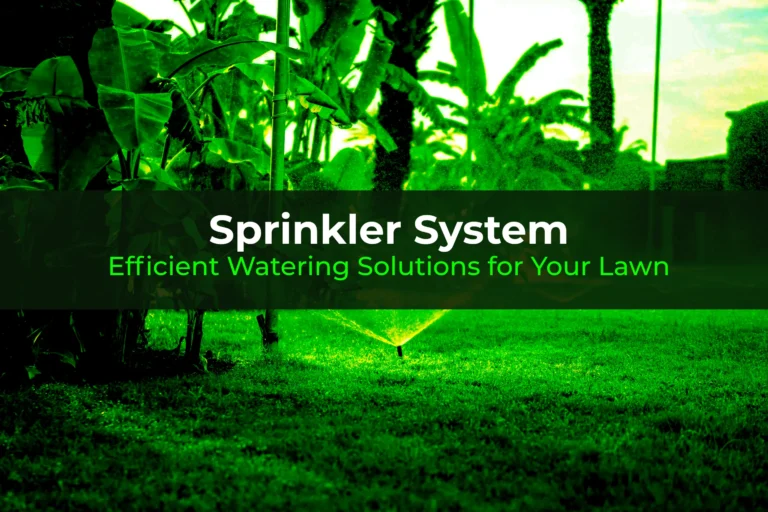
Transform your garden with our top 10 gardening tips and lawn care advice. Achieve your landscaping goals with ease and expert Guidelines.
10 Gardening Tips to Help You Reach Your Goals
Gardening is a therapeutic and relaxing activity that people enjoy it a lot, and it even gives you a chance to be close to nature by designing a good-looking outdoor living space. Presenting a skill that you’ve mastered or learning a new one is vital aspect for all. Gardeners, both rookies and skilled ones, never stop the hunt for new ideas to push their knowledge to next level. From keeping a lush lawn to growing colorful flowers and giving rise to plenty vegetables here are 10 gardening tips to assist you in your journey of agricultural terminology.

1. Plan and Design Your Garden
Before you start planting, take the time to plan and design your garden. Consider the layout, sunlight exposure, and the types of plants you want to grow. This will help you make the most of your space and create a cohesive and visually appealing garden.
2. Invest in Quality Tools
Having the right tools can make a world of difference in your gardening experience. Invest in quality gardening tools such as spades, pruners, and watering cans to make your gardening tasks more efficient and enjoyable.
3. Understand Your Soil
Soil is the foundation of a successful garden. Test your soil to understand its composition and pH levels. This will guide you in choosing the right plants and help you determine if any amendments are needed to improve the soil quality.
4. Practice Watering Wisely
Proper watering is essential for the health of your plants. Be mindful of the specific water needs of each plant and avoid overwatering or underwatering. Consider using a soaker hose or drip irrigation system to deliver water directly to the roots.
5. Embrace Organic Pest Control
Dealing with pests is a common challenge in gardening. Instead of resorting to chemical pesticides, explore organic pest control methods such as companion planting, introducing beneficial insects, and using natural repellents to protect your plants from pests.
6. Mulch for Moisture and Weed Control
Applying mulch around your plants helps retain moisture in the soil, suppresses weed growth, and regulates soil temperature. Organic mulches like wood chips or straw also contribute to the overall health of the soil as they break down over time.
7. Prune and Deadhead Regularly
Pruning and deadheading are essential tasks for maintaining the beauty and health of your garden. Regularly remove dead or overgrown branches, as well as spent flowers, to promote new growth and keep your plants looking their best.
8. Feed Your Plants Naturally
Provide essential nutrients to your plants by using organic fertilizers such as compost, manure, or homemade compost tea. These natural fertilizers enrich the soil and support the long-term health of your garden without the use of harsh chemicals.
9. Educate Yourself and Stay Curious
Gardening is a continuous learning process. Stay informed about the specific needs of your plants, explore new gardening techniques, and stay curious about different plant varieties. There are always new things to discover in the world of gardening.
10. Enjoy the Process and Be Patient
Above all, remember to enjoy the process of gardening and be patient with the results. Gardening teaches us valuable lessons about nurturing and growth, and the journey itself is just as important as the end results.
People also Reading: Exploring the World of Garden Style Apartments
Conclusion
By incorporating these gardening tips into your routine, you can cultivate a thriving and beautiful garden that brings you joy and satisfaction. Whether you’re tending to a small backyard garden or a sprawling landscape, the principles of good gardening practices remain the same. With dedication and care, you can reach your gardening goals and create a vibrant outdoor sanctuary for yourself and your loved ones.
FAQs (Frequently Asked Questions)
Q: What are some essential lawn care tips for maintaining a healthy and lush lawn?
A: Essential lawn care tips include regular mowing, proper watering, aeration, fertilization, and addressing any weed or pest issues. It’s also important to choose the right type of grass for your climate and soil conditions.
Q: How can I prevent common gardening mistakes and ensure the success of my plants?
A: To prevent common gardening mistakes, take the time to research and understand the specific needs of your plants, including sunlight, water, and soil requirements. Proper planning, soil preparation, and ongoing observation of your garden can help you avoid potential pitfalls.
Q: What are some eco-friendly practices I can incorporate into my gardening routine?
A: You can incorporate eco-friendly practices into your gardening routine by using organic fertilizers, composting kitchen scraps, collecting rainwater for irrigation, and choosing native plants that require minimal water and maintenance.
Q: How can I attract beneficial insects to my garden for natural pest control?
A: To attract beneficial insects such as ladybugs, lacewings, and bees to your garden, plant a variety of nectar-rich flowers, provide shelter and nesting sites, and avoid the use of chemical pesticides that can harm these beneficial insects.
Q: What are some creative ways to design and personalize my garden space?
A: You can personalize your garden space by incorporating elements such as decorative planters, garden art, pathways, and seating areas. Consider adding unique plant varieties, creating themed garden sections, and experimenting with different landscaping styles to reflect your personal taste and style.
Harness the Power of Composting
Composting is a fantastic way to turn your garden and kitchen waste into a nutrient-rich soil amendment that can greatly benefit your plants. By creating your own compost, you’re not only reducing waste but also providing your plants with the natural, organic materials they need to thrive. Start a compost pile or bin in your backyard, and regularly add a mix of green (nitrogen-rich) and brown (carbon-rich) materials. As the compost breaks down, it will produce a dark, crumbly substance that you can then incorporate into your garden beds and potting mixes.
Maximize Your Vertical Space
If you have limited horizontal space in your garden, consider utilizing vertical space by installing trellises, cages, or other structures to support your climbing plants. This not only helps conserve ground space but also allows you to grow a wider variety of plants, such as tomatoes, cucumbers, and pole beans, in a smaller footprint. Vertical gardening also improves air circulation around the plants, reducing the risk of disease and pests.
Implement Companion Planting
Companion planting is the practice of strategically placing certain plants next to each other to either repel pests, attract beneficial insects, or provide other mutual benefits. For example, planting marigolds around your vegetable garden can help deter pests like aphids and nematodes. Likewise, planting fragrant herbs like basil or rosemary near your tomato plants can help confuse and deter harmful insects. Experiment with different companion planting combinations to create a more balanced and thriving garden ecosystem.
Embrace Succession Planting
Succession planting is the technique of staggering your plantings throughout the growing season to maximize the productivity of your garden. By planting different crops at varying intervals, you can extend your harvest and ensure a continuous supply of fresh produce. This is particularly useful for crops with shorter maturation periods, such as leafy greens, radishes, and certain herbs. Plan your succession planting schedule based on the recommended planting and harvesting times for your specific climate and growing conditions.
Incorporate Native Plants
Native plants are those that naturally occur in a specific geographic region and are well-adapted to the local climate, soil, and wildlife. Incorporating native plants into your garden can provide numerous benefits, including reduced maintenance, increased biodiversity, and better drought tolerance. Native plants also serve as important food sources and habitats for local pollinators and other beneficial insects. Research the native plant species that thrive in your area and consider adding them to your garden to create a more sustainable and ecologically-balanced landscape.
Optimize Irrigation Strategies
Efficient water management is crucial for maintaining a healthy and thriving garden. Explore different irrigation techniques, such as drip systems, soaker hoses, or rainwater harvesting, to deliver water directly to the roots of your plants and minimize water waste. Additionally, consider grouping plants with similar water needs together to simplify your irrigation schedule and ensure that each plant receives the appropriate amount of moisture.
Embrace Integrated Pest Management
Integrated Pest Management (IPM) is a holistic approach to pest control that emphasizes the use of natural and preventative methods before resorting to chemical pesticides. This includes techniques like physical removal of pests, introduction of beneficial insects, and the use of organic pest repellents. By adopting an IPM strategy, you can reduce the environmental impact of your gardening practices and create a more sustainable ecosystem in your garden.
Rotate Your Crops
Crop rotation is a valuable technique in gardening that involves planting different types of crops in the same area in a sequential manner. This practice helps to prevent the buildup of soil-borne diseases and pests, as well as replenish the soil’s nutrients. By rotating your crops, you can also break the life cycle of many common garden pests and diseases, resulting in a healthier and more productive garden over time.
Prioritize Soil Health
Healthy soil is the foundation of a thriving garden. To maintain optimal soil health, regularly add organic matter, such as compost or well-rotted manure, to improve soil structure, water-holding capacity, and nutrient content. Additionally, consider implementing cover cropping or green manure techniques to further enrich the soil and prevent erosion during the off-season.
Embrace Diversity in Your Garden
Cultivating a diverse garden can bring numerous benefits, from increased resilience against pests and diseases to enhanced visual appeal. Incorporate a variety of plant types, including annuals, perennials, and native species, to create a balanced ecosystem that supports a wide range of beneficial insects and wildlife. This diversity not only promotes the overall health of your garden but also adds visual interest and beauty to your outdoor living space.
Conclusion
These 10 gardening tips provide a comprehensive guide to help you reach your gardening goals and create a thriving, sustainable outdoor oasis. By incorporating these techniques into your gardening practices, you’ll be able to overcome common challenges, maximize your productivity, and enjoy the many rewards that come with successful gardening. Remember, gardening is a journey, so embrace the process, stay curious, and enjoy the journey as you watch your garden flourish.
FAQs
What are the most common gardening tips for beginners?
Some of the most common gardening tips for beginners include:- Start small and gradually expand your garden- Choose easy-to-grow plants suitable for your climate- Ensure your plants receive the right amount of sunlight and water- Enrich your soil with organic matter, such as compost- Regularly weed and mulch your garden to suppress weeds and retain moisture- Protect your plants from pests and diseases using organic methods- Learn about plant care and maintenance specific to the plants you’re growing
What are some tips for maintaining a healthy lawn?
Here are some tips for maintaining a healthy lawn:- Mow your lawn regularly, but avoid cutting more than one-third of the blade height at a time- Water your lawn deeply and infrequently, about 1-2 inches per week- Aerate your lawn to improve soil compaction and water absorption- Fertilize your lawn with a slow-release, organic fertilizer- Overseed your lawn in the fall to fill in bare spots and thicken the grass- Keep your lawn free of weeds by pulling them or using organic weed control methods- Monitor for pests and diseases, and address them promptly to prevent further damage
About Lawn Movers Guide
Interesting Posts



Garden Fork: Essential Tool for Effective Gardening



Wheelbarrow Handles: Choose the Best for Easy Gardening
Twenty years from now you will be more disappointed by the things that you didn’t do than by the ones you did do.
- Mark Twain Tweet

Lawn Aerator | Improve Your Lawn’s Health & Appearance


Fertilizer Spreader: Enhance Your Lawn’s Health Today
